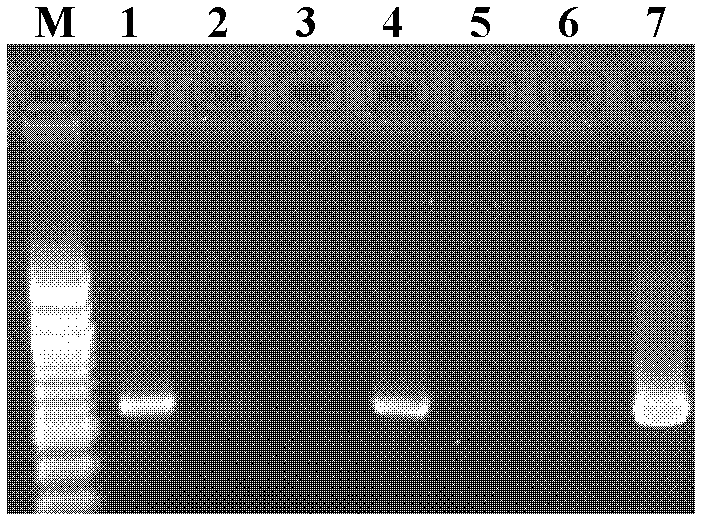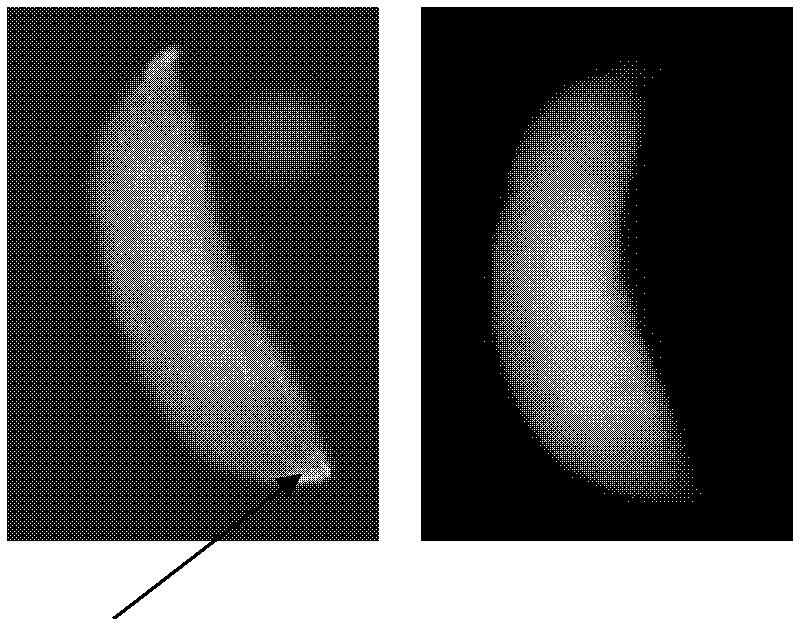A kind of extraction method of Wolbachia (wolbachia) used for embryo injection transfection
An extraction method and embryo technology, which are applied in the field of Wolbachia extraction, can solve problems such as being unfavorable to mosquito strains and take a long time, and achieve the effects of saving time and energy, easy operation and strong controllability
- Summary
- Abstract
- Description
- Claims
- Application Information
AI Technical Summary
Problems solved by technology
Method used
Image
Examples
Embodiment 1
[0019] 1. Acquisition of Wolbachia: Collect the ovaries of Aedes albopictus containing Wolbachia by dissecting them, and dissect multiple mosquitoes at one time to collect their ovaries. The ovaries collected at one time are very important. About 50mg, collected and placed in 1ml of SPG buffer. The ovarian tissue was crushed with a Dounce Tissue Grinder, and the ovarian tissue was ground 10 times by the Dounce Tissue Grinder, 0.5 min each time, and the ground tissue was washed with 0.5 ml of SPG buffer collect. The collected liquid was then centrifuged at 300 g for 5 minutes in a centrifuge to remove some tissue fragments. Transfer the supernatant to a new centrifuge tube and centrifuge again at 12000g for 10 minutes. The supernatant was removed, and the sediment in the centrifuge tube contained purified Wolbachia. After dissolving the sediment in the centrifuge tube with 50 microliters of SPG buffer solution, centrifuge again at 300g for 5 minutes to further remove the rem...
Embodiment 2
[0023] 1. Acquisition of Wolbachia: Collect the ovaries of Aedes albopictus containing Wolbachia by dissecting them, and dissect multiple Aedes albopictus at one time to collect their ovaries. The ovary of Aedes albopictus weighs about 50 mg and is collected in 1 ml of SPG buffer. The ovarian tissue was crushed with a Dounce Tissue Grinder, and the ovarian tissue was ground 10 times by the Dounce Tissue Grinder, 0.5 min each time, and the ground tissue was washed with 0.5 ml of SPG buffer collect. The collected liquid was then centrifuged at 100g in a centrifuge for 10 minutes to remove some tissue fragments. Transfer the supernatant to a new centrifuge tube and centrifuge again at 15000g for 5 minutes. The supernatant was removed, and the sediment in the centrifuge tube contained purified Wolbachia. After dissolving the sediment in the centrifuge tube with 50 microliters of SPG buffer solution, centrifuge again at 100g for 10 minutes to further remove the remaining tissue ...
Embodiment 3
[0027] 1. The acquisition of Wolbachia (Wolbachia) is as follows: the Culex mosquito (Cx.pipiens molestus) containing Wolbachia (Wolbachia) is collected by dissecting its ovaries, and a plurality of Culex mosquitoes are dissected at one time to collect its ovaries. Culex ovaries collected at one time weigh about 50 mg, and placed in 1 ml of SPG buffer after collection. The ovarian tissue was crushed with a Dounce Tissue Grinder, and the ovarian tissue was ground 10 times by the Dounce Tissue Grinder, 0.5 min each time, and the ground tissue was washed with 0.5 ml of SPG buffer collect. The collected liquid was then centrifuged at 1000g in a centrifuge for 1 minute to remove some tissue fragments. Transfer the supernatant to a new centrifuge tube and centrifuge again at 5000g for 20 minutes. The supernatant was removed, and the sediment in the centrifuge tube contained purified Wolbachia. After dissolving the sediment in the centrifuge tube with 50 microliters of SPG buffer ...
PUM
 Login to View More
Login to View More Abstract
Description
Claims
Application Information
 Login to View More
Login to View More - R&D
- Intellectual Property
- Life Sciences
- Materials
- Tech Scout
- Unparalleled Data Quality
- Higher Quality Content
- 60% Fewer Hallucinations
Browse by: Latest US Patents, China's latest patents, Technical Efficacy Thesaurus, Application Domain, Technology Topic, Popular Technical Reports.
© 2025 PatSnap. All rights reserved.Legal|Privacy policy|Modern Slavery Act Transparency Statement|Sitemap|About US| Contact US: help@patsnap.com



